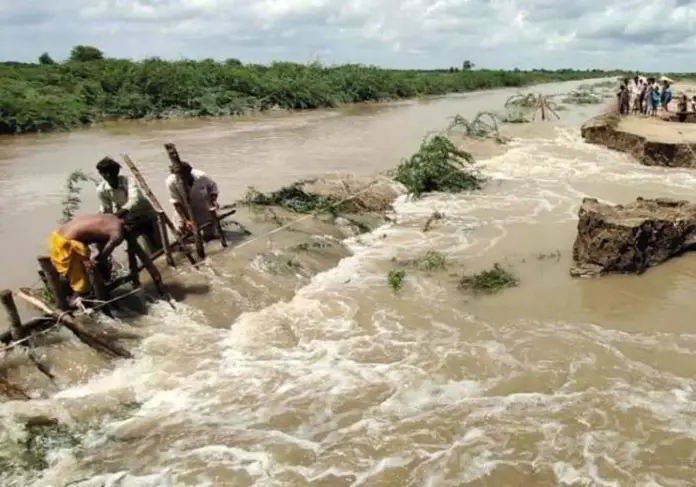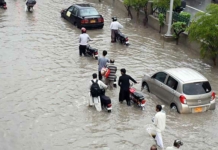Gilbert F. White, an American leading environmental geographer, also referred to as the “father of floodplain management”, said, and I quote, “Floods are act of God, but flood losses are largely acts of man”. It is true and believable for all believers of any faith and carries a very subtle message for all of us. Flood omissions are two-pronged. Foremost is to acknowledge floods as an outcome of force majeure; an act of a superior force, and then understand how flood losses are attributable to mismanagement by humans. In the wake of the ongoing national crisis caused by flooding, most of our country’s area has been submerged and affected. Balochistan was the worst hit, followed by Sind, KPK, South Punjab and Gilgit-Baltistan. As a writer, I consider it indifferent and arrogant to not make an effort to raise awareness of both aspects.
Let us take into account the mismanagement by humans first, as this can be debated, whereas an act of God cannot be. Despite the fact, that, I am not an expert of the field, yet I was able to identify few managerial snags while researching for some supporting content to the context of this write up. My research was based on a study of executive summaries of Annual Flood Reports from 2014 to 2020, available on the official website of the Federal Flood Commission, a federal institution that was set up in 1977 to adopt an integrated and coordinated approach for managing floods at the national level.
Scanning the flood reports revealed repetition of the same recommendations, unabated for many years. It seems to be a classic case of cut, copy, and paste. Let me quote a few examples like adequate and timely provision of funds for flood protection, timely completion of approved and ongoing protection projects by Provincial Irrigation Departments (PIDs) and Federal Line Agencies (FLAs), removal of encroachments intervening Lai (at Rawalpindi) are a few of the many recommendations that have been making the rounds every year, emphasising aspects which otherwise should be standard operating procedures for different stake holders. One can safely conclude at a glance that these recommendations are mostly generic, open-ended, and outright verbose in nature, and may have been put in to make the document more voluminous than the requisite action, which in turn is not forthcoming. Leeway to this effect can be given on the basis of this being a commission in an advisory role, thus the inability to exert influence or monitor and evaluate progress on its recommended measures. Decisions taken and quoted in one report are again relegated to recommendations in the following year’s report (reports for years 2019 and 2020).
Two more facets which popped up from these reports are important to be highlighted here. One, consequent to worst flooding of 2010, formulation of National Flood Protection Plan – IV (NFPP-IV) was undertaken in earnest. The term NFPP-IV and the fact that it was under preparation kept appearing and reappearing in these reports till 2017. I am sure if someone responsible is asked the reasons for consuming seven years, many will be cited. For less than that, they got the floods delayed for all these years. Necessary approvals, which were to be sought on the basis of this plan, took another three years to be formalised and approved in 2020. Two is the data on flood peaks at different river courses since 1999. Over and over, Kalabagh figures out as a site which, if dammed, could be a major asset to regulating floods. Similarly, other sites can also be surveyed on the basis of this data. Bhasha, Dasu, and Mohmand dams are just dunes in the desert of effort required.
Planning to dam a site is in fact damning the damming effort in this country. It either becomes so politicised that it is left as a bad job, or if at all, construction of a dam is taken up, it opens floodgates, not of water, but of corruption. A video of a dam contractor from Balochistan, gone viral on social media, painfully exposes the rampant corruption in this sector and claims that almost half of the fund is consumed in commissions and kickbacks to the contract awarding authorities. Dwindling economic conditions also exacerbate the existing paucity of funds and thus the quality of construction. Climate change resulting in glacier bursts in the north and cloudbursts elsewhere causes flash floods and torrents in hill tracts and floods in the plains. Lack of plantation on river embankments expedites erosion and washing away, resulting in breaches followed by complete inundations. Damages have been curtailed in areas of KPK where million-tree tsunami projects were carried out and embankments reinforced.
One-window operation for flood management is the need of the hour. The focus should remain on the timely formulation of policies and envisaged plans. What all is reported needs to be disseminated to decision-making authorities. Reports are in fact documents if they are not to be acted upon in a certain time frame and those actions are not evaluated and monitored by the reporting authority. We do not need the burden of agencies being set up for this purpose, but reorganisation and reorientation of those which are already functional. We cannot afford the luxury of taking decades to plan for floods. This brings us to the other prong of “force majeure”. I, as a believer, redefine the same as an act of “Supreme Force”, the Almighty, who ordains in the Holy Quran, “Do they not make out that once or twice every year they are confronted with some ordeal, yet they do not repent nor accept any advice” (Verse 126, Chapter 9; Repentance). We must repent our sins and seek His mercy, reciting “O earth, you swallow your water and O Sky, now you stop pouring” (Initial part of verse 44, Chapter 11 Hud). Ameen.







